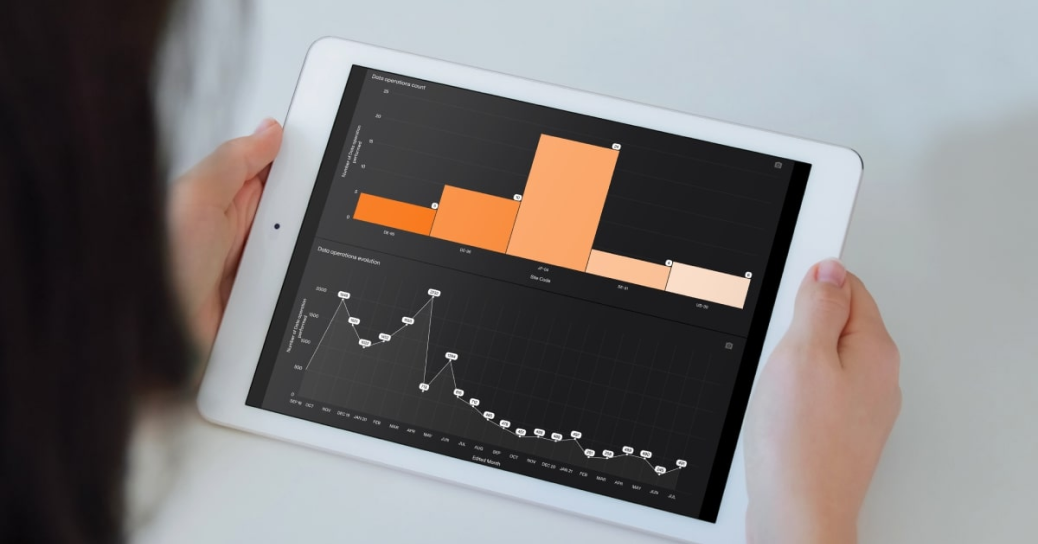Electronic Patient Recorded Outcome (ePRO) software plays an increasingly important role in clinical trials. As the focus on patient centricity grows, research organizations are embracing more accessible and convenient digital alternatives to traditional paper-based data collection methods.
ePRO software lets research teams gather accurate, live clinical insights direct from patient devices. And, by enabling trial participants to share their experiences from the comfort of their own homes, it reduces the need for on-site visits. This leads to smoother user experiences which, in turn, helps to improve participant recruitment and retention rates.
In this guide, we take a closer look at the benefits of ePRO software in clinical trials. We’ll also provide you with our best practice recommendations to help you get the most out of your software.
What is ePRO software in clinical trials?
ePRO software enables participants to complete questionnaires and upload data in real time via their preferred device – typically a smartphone or tablet. Depending on the nature of the trial, this may include symptoms, treatment efficacy, and side effects.
Although you can deploy it as a standalone solution, ePRO software works best as part of a complete eClinical suite. For example, integrating ePRO software into an electronic data capture (EDC) system creates a central database for trial data – eliminating the need for time-consuming data reconciliation.
How does it work?
- Participants use their preferred device to complete questionnaires or record information in their electronic trial diary.
- The ePRO software organizes and stores the data. Some systems have built-in validation checks that flag potential errors to improve accuracy.
- Researchers analyze the data, monitoring inputs in real time to improve decision-making and patient outcomes.

Benefits of using ePRO software in clinical trials
Streamlined data collection and management
ePRO software allows you to capture clinical trial data directly from participants in real time. There’s no waiting for paper documents or laborious manual data entry process, saving countless hours every year.
Some solutions have configurable data entry windows, which give you greater control over when participants can submit information. For example, you can restrict pain diary entries to specific hours to monitor how it progresses throughout the day.
Increased data quality
Advanced ePRO software uses built-in validation checks that flag inconsistent or implausible entries, minimizing transcription errors and missing information. This improves the accuracy of your data and, by extension, the quality of the insights you can extrapolate from it.
Improved participant retention and compliance
ePRO software combines a user-friendly interface with the freedom to share data using a range of devices, making it easier for subjects to engage with clinical trials. Less time completing paper forms means fewer in-person visits, increasing retention rates. According to Deloitte, 18% of patients drop out after enrolling, with many citing difficulties reaching the trial site as the main reason.
Some ePRO software even lets you set up automated alerts that remind participants when it’s time to complete a questionnaire or assessment, improving compliance.
Better patient outcomes
As a central repository for trial data, ePRO software provides easy access to real-time health insights. With better visibility, you can monitor participant well-being more accurately and make informed treatment decisions.
By contrast, paper-based data collection methods rely on participants recording symptoms and experiences from memory. This can result in recall bias and inaccurate conclusions, compromising your study.

Five ePRO software best practices
1. Train participants and staff
Before deploying an ePRO software, set aside time to teach site staff and participants how to use it. Provide clear written instructions explaining how and when to use the technology, along with practical onboarding sessions that let users explore it at their own pace.
As with any technology, participants and site staff are more likely to use ePRO software if they’re familiar with it.
2. Turn off default responses
Resist the temptation to include prepopulated or default responses in your questionnaires. Although it might seem like a quick and easy way to encourage engagement, research suggests that prepopulated information can bias responses. Both the Food and Drug Administration (FDA) and European Medicines Agency (EMA) recommend restricting default responses to instances where the information derives from previously entered data.
A more effective way to ensure engagement is to prevent participants from moving on to the next question until they’ve answered the current one.
3. Set limits on response ranges
One of the main advantages of using ePRO software in clinical trials is the ability to set response ranges. For example, capping entries at 31 for questions relating to days in a month. You can also set pop-up notifications that ask participants to double-check unlikely or implausible responses.
Controls like these reduce the frequency of inconsistent or invalid responses that can skew your data.
4. Let participants review and amend previous responses
Give participants the freedom to review and amend previous responses as many times as they like before submitting data. Configure your system to display the participant’s original responses as they navigate to previous questions. This makes it easier for them to compare answers and eliminates data re-entry.
There are benefits for your research teams, too. Carefully considered answers are generally more reliable than impulsive responses.
5. Send files in read-only mode
ePRO software makes collaborating with patients, researchers, and sponsors easier. But before you start sharing files, make sure they’re in read-only mode.
Recipients can edit plain text and CSV files freely, with no audit trail recording what they’ve changed or when. By contrast, sending files in read-only formats allows stakeholders to view the data only –preventing data corruption.

Examples of ePRO software in clinical trials
Smerud Medical Research Group
The Smerud Medical Research Group manages over 2,000 projects worldwide, with some based in distant locations like Brazil. Collecting and organizing data over such a large area using traditional paper methods was becoming untenable. So, the team invested in an eClinical suite with sophisticated ePRO capabilities.
Incorporating ePRO software into their clinical trials turned data collection from a daily chore into an engaging activity. Participants simply log in to the system on their preferred devices and complete the questionnaires. This enables Smerud to launch new trials anywhere in the world in just a few days, supporting the team’s mission to create a healthier world.
Linical Americas
Linical Americas is a global contract research organization (CRO) offering drug development services covering everything from early-stage trials to large-scale, multinational studies. With multiple projects to juggle across the globe, the team needed an efficient and cost-effective way to manage data.
After careful consideration, the team decided to implement a comprehensive EDC system with advanced ePRO and randomization and trial supply management (RTSM) capabilities. Adopting the solution has revolutionized the way Linical Americas analyzes and shares data, saving time, improving efficiency, and reducing costs.

Simplify data collection and participant retention with ePRO software
Harnessing ePRO in clinical trials has been a game-changer for research teams.
Modern tools make it quick and easy to share data, allowing patients to participate in trials anywhere in the world. With ePRO software, even communities in remote locations have access to revolutionary medical research.
For research organizations, ePRO software enables you to collect, manage, and analyze data efficiently and cost-effectively. By giving researchers access to real-time health data, they play a vital role in driving medical innovation and delivering better treatments for every patient.
Why Viedoc?
Consistently listed among the top-rated providers on G2, Viedoc specializes in delivering intuitive and adaptable eClinical solutions that remove the barriers to effective clinical research.
Our ePRO software lets trial participants share data when, how, and where it suits them. Coupled with intuitive data analysis and cleaning tools enable researchers to manage large datasets with ease, our solution helps you:
- Improve data quality
- Increase participant recruitment and retention
- Capture patient data securely and compliantly
- Minimize hardware maintenance, distribution, and costs
Available in over 50 languages, Viedoc lets patients engage with trials in their native language – for simpler, smarter, and more satisfying participant experiences.




